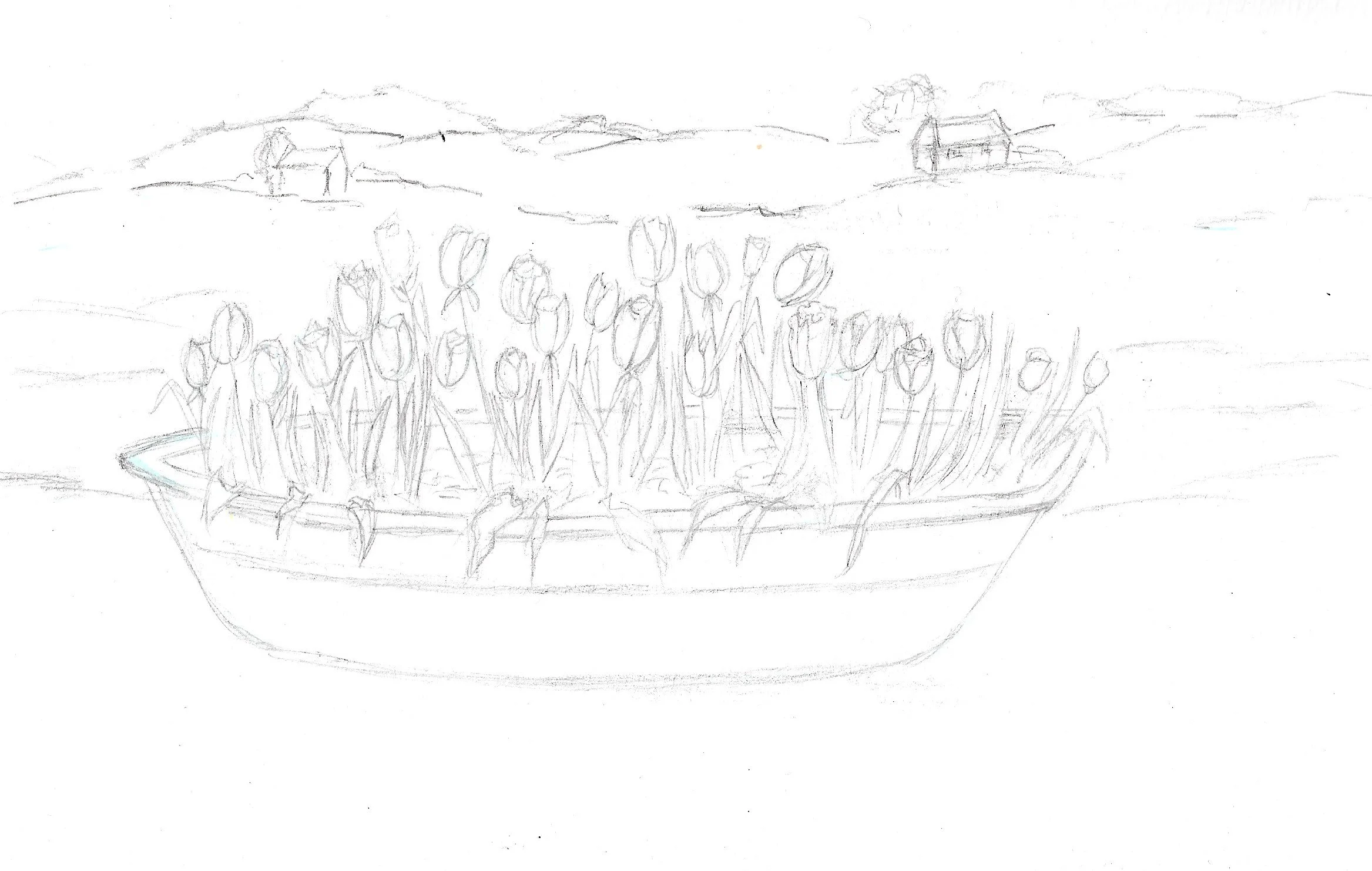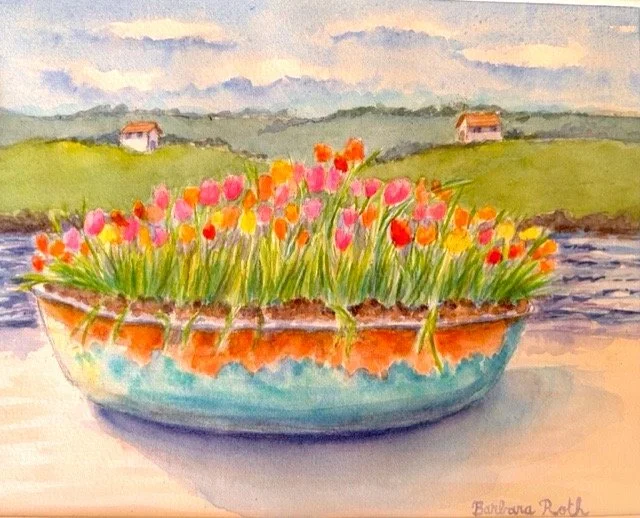Boatload of Tulips Tutorial
Print out the drawing below and copy, trace or draw it onto your watercolor paper with light pencil lines. Read the instructions below before you begin to paint. Unless I say paint wet on wet, paint on the dry paper.
Close one eye and squint at the color painting below. You should see where the colors are dark, medium, light and the white of the paper. You could also print out the color painting in black and white to see where I’ve used light, medium and dark paint and the areas I have left white. The range of colors from dark to white are called values and they are what gives a drawing or painting dimension.
The geners al rules I follow are; paint from top to bottom, light to dark, biggest areas to small areas and add details last. I change the order of painting some areas to give a wet area time to dry if I don’t want its neighboring area to bleed into it.
Sky - brush clean water in the sky area. Float in a brush full of cobalt blue, either leaving white areas for clouds or blotting out cloud shapes with a tissue. When the sky is still wet, add a darker shade of blue under the clouds. You can also mix a bit of permanent rose into your sky color and add some brush strokes of that to your sky. Hills - skip the farthest back set of hills and paint the first set, wet on dry with sap green or sap mixed with burnt sienna or yellow ochre. Land in the foreground - paint a very light wash of yellow ochre or if you have it buff titinium. Green tulip leaves - paint the leaves with sap green mixed with lemon yellow and let it dry or dry it with a hair dryer. Add successive layers of sap green using less water and more paint to get each layer darker. You can also mix in dark blues to darker your yellow green. *As you add each layer do not completely cover up the lighter colors, your goal is to have a variety of greens from dark to light. Far hills - paint them with sap green mixed with ultramarine blue and a touch of red to make them a duller green to receed. Reeds at the base of the hills - paint a mix of burnt sienna with a touch of ultramarine blue. Shadow under boat - brush dark blue or blue violet close to the bottom of the boat, then brush it back and forth to create a gradating shadow. Dirt - use dots of burnt sienna with varying amount of ultramarine blue mixed in. Boat - paint the bottom with watery washes of either cobalt teal if you have it or another blue. You can blot out some areas with a tissue to get texture. Also drop in some watery yellow on the left side to show where the light is hitting the boat. Rusted upper boat - use some orange or red orange together with burnt sienna and a bit of blue added to the mix in some areas you want duller. Water behind the boat - brush on a light water blue horizontally leaving some areas of the paper white. Let dry, then add successive lines of darker blues. You can make your horizontal lines show the waves if you make then curvy. Houses on the hills - Use a watery ultramarine wash with a bit of permanent rose on the darker side of the houses. Use a red orange color mix with a touch of blue to dull it down for the roofs of the houses. Foliage on the hills - use sap green mixed with ultramarine blue. Now for the Tulips - either paint them with layers of opera rose, new gamboge, lemon yellow, red orange and yellow orange or choose your own choice of colors. Details of house etc. - use burnt sienna for the doors mixed with a bit of ultramarine blue and use the same combo with more blue for the windows. Add any other details you like.


